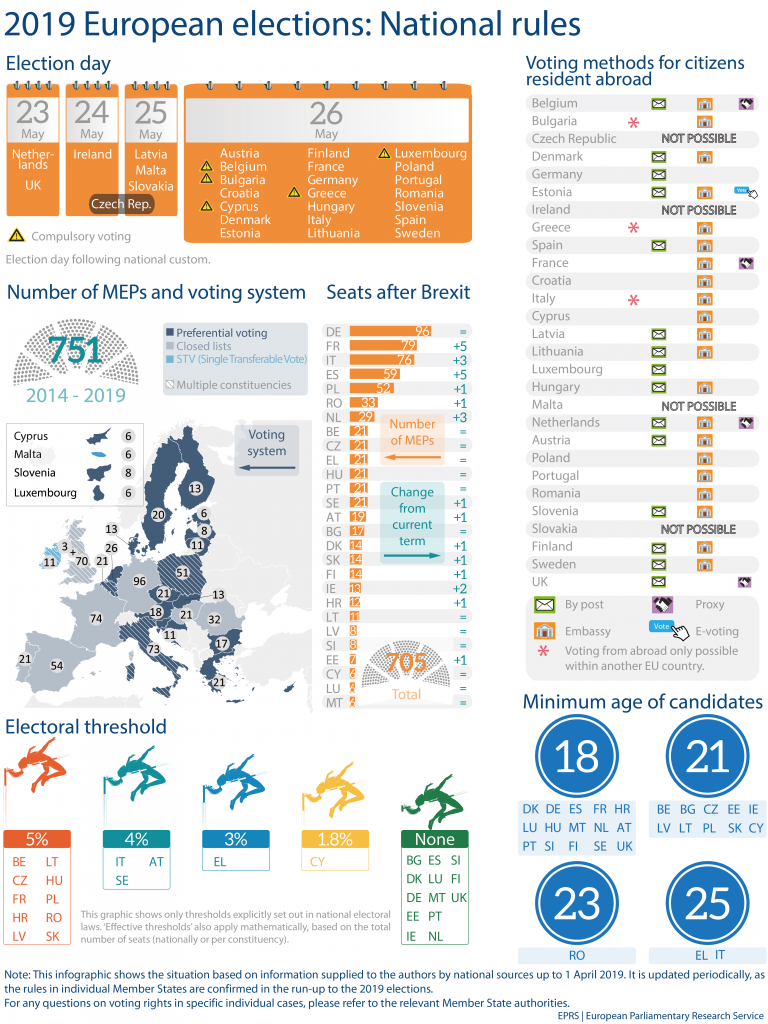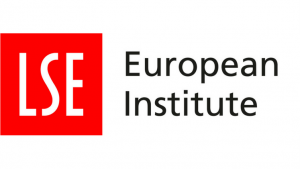EUROPP is running a series of articles on the 2019 European Parliament elections. This page collates all of the material in the series and provides some information on the process.
[separator top=”40″ style=”none”][title size=”2″]How European Parliament Elections Work[/title]
Elections will be held in each of the 28 EU member states on 23-26 May to elect the Members of the European Parliament (MEPs) who will represent European citizens until the next European Parliament elections in 2024. The date of the election in each state varies, largely because different countries have traditions of voting on different days of the week. The elections are therefore spread out over four days.
Number of MEPs
The total number of MEPs was due to be reduced from 751 to 705 if the UK left the European Union before the vote. However, the UK is now participating in the elections and until the UK leaves, there will be 751 MEPs. The distribution of seats between each state could change if the UK leaves the European Union before the new term starts on 2 July.
Electoral systems
It is up to each state to choose how they elect their allocated MEPs. Most countries use a form of party list proportional representation, of which there are essentially two different types. Under the first system, termed a ‘closed list’ system, voters simply vote for a party of their choice. Seats are then distributed to parties based on the percentage of the vote they receive: for instance, if there are 10 seats available and five parties each gain 20 per cent of the vote, then all five parties will receive two seats each. Under a closed list system, the politicians who receive these seats are determined by a list of candidates which is put forward by each party in advance. If a party wins one seat then it will be given to the candidate at the top of the list, if they win two seats then the next seat will go to the second candidate on the list, and so on.
The second form of party list proportional representation allows voters to vote not just for a party, but also to influence the order of the party lists by indicating a preference for individual candidates. In this system, sometimes called ‘preferential voting’ or a ‘semi-open list’, seats are distributed to parties based on the overall vote share they receive, but within party lists those candidates with the highest support are put to the top of the list (although there are variations in how this works in practice).
An alternative system, which has been used in Ireland, Malta and the region of Northern Ireland in the UK, is the Single Transferable Vote (STV). In this system, voters rank candidates in order of preference, typically by putting the number 1 next to their first choice, 2 next to their second choice and so on. The basic principle for allocating seats under this system is that candidates must reach a certain quota to be elected (e.g. if there is only one seat being contested in a constituency then the quota might be 50 per cent of the vote). If no candidate reaches this quota (or in the case of multiple seats within a constituency, not enough candidates to allocate all of the seats available) then candidates with the least votes are ‘eliminated’ and the voters who supported these candidates have their vote ‘transferred’ to their second preference. This continues until all of the seats have been allocated.
There are also variations in the types of constituency used in European elections. Some states separate their elections into different regions, but most countries treat the entire country as a single constituency. Information on the systems used in each state is shown below (Credit: European Parliament):
[separator top=”40″ style=”none”][title size=”2″]Predicted result (Politico)[/title]
Politico’s predicted result (UK seats included) based on the latest polling. For more information on the groups in the Parliament, see: European People’s Party (EPP); Progressive Alliance of Socialists and Democrats (S&D); Alliance of Liberals and Democrats for Europe (ALDE); European Conservatives and Reformists (ECR); The Greens–European Free Alliance (Greens/EFA); European United Left–Nordic Green Left (GUE-NGL); Europe of Freedom and Democracy (EFD).
[separator top=”40″ style=”none”] [title size=”2″]Coverage of the elections[/title] [recent_posts columns=”3″ number_posts=”30″ offset=”” cat_slug=”euvotes2019″ thumbnail=”yes” title=”yes” meta=”yes” excerpt=”no” excerpt_words=”15″][/recent_posts]











